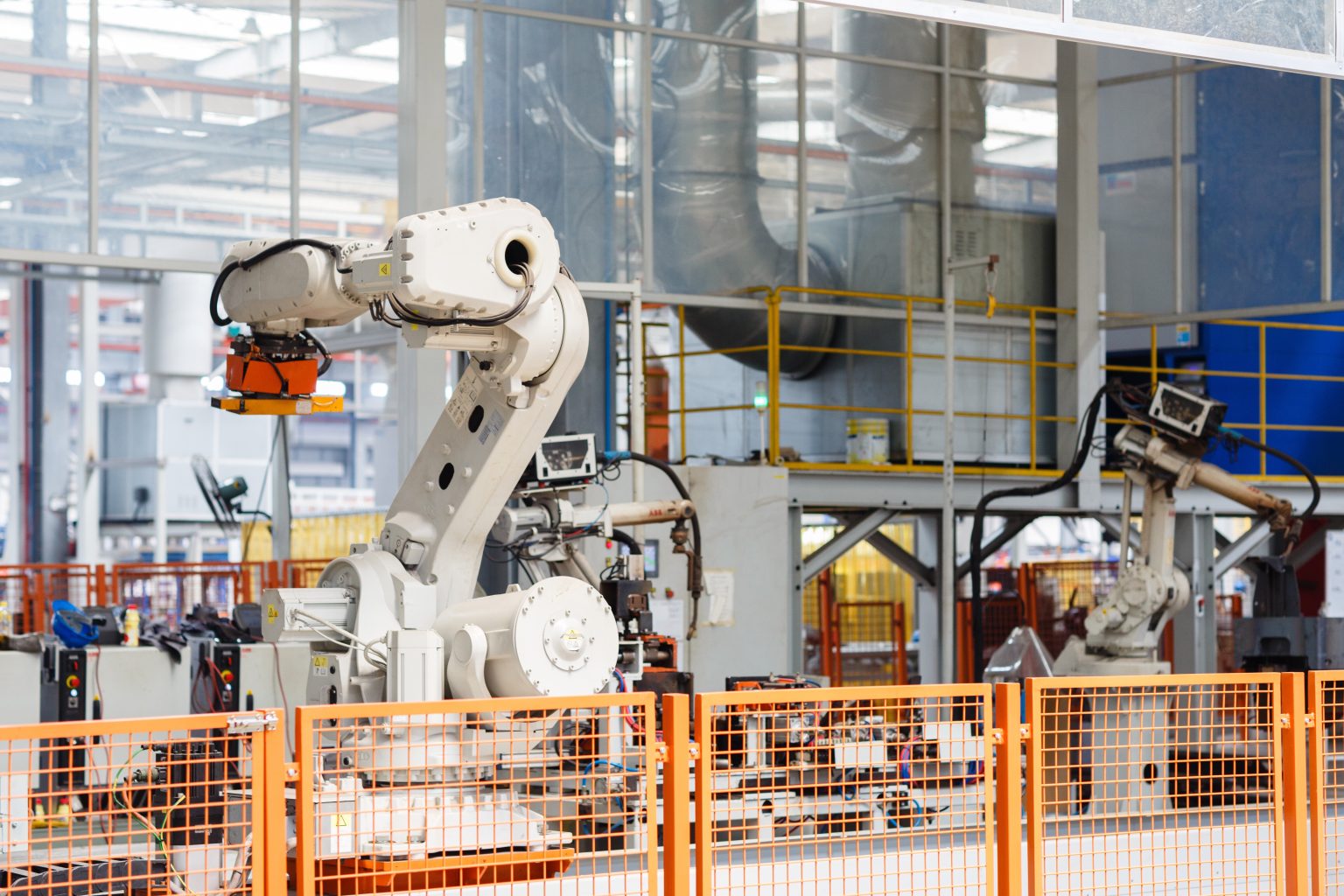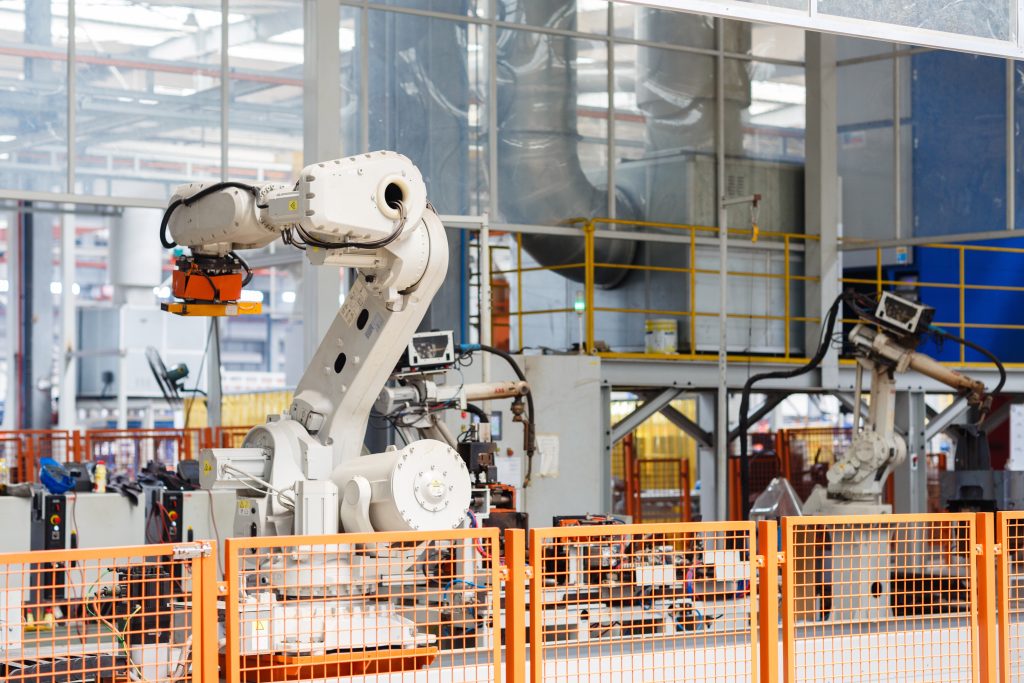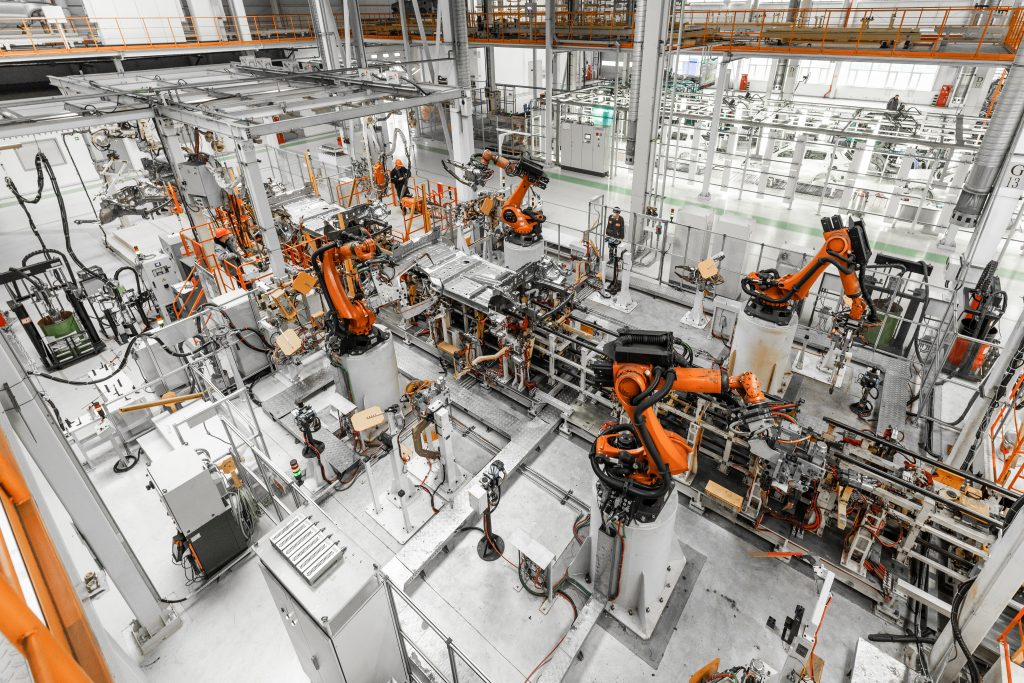In today’s fast-paced industrial landscape, collaborative robots (cobots) are revolutionizing how businesses automate tasks. Unlike traditional industrial robots, cobots are designed to work safely alongside humans, offering flexibility, ease of use, and affordability. This shift toward human-robot collaboration is enabling companies across manufacturing, logistics, and healthcare to streamline operations, reduce costs, and enhance productivity. With lower entry barriers and faster deployment, cobots are no longer exclusive to large corporations. Small and medium-sized enterprises (SMEs) can now embrace automation without the hefty investments once required, unlocking new levels of efficiency and competitiveness.
What Is a Cobot?
A collaborative robot (cobot) is a type of robot specifically designed to interact and work alongside humans in a shared workspace. Unlike traditional industrial robots that often require safety cages and dedicated spaces, cobots are engineered with advanced sensors, force limiters, and AI capabilities that ensure safe interaction with humans. This human-centric approach enables cobots to handle repetitive, mundane, or physically demanding tasks, allowing employees to focus on more strategic, value-adding activities.
Reduction of Production Costs
One of the most significant advantages of cobots is their ability to reduce production costs. By automating repetitive and labor-intensive tasks, cobots help businesses lower labor expenses, minimize human error, and boost operational efficiency. According to Standard Bots, the cost-effective nature of cobots makes them especially attractive to small and medium enterprises that seek to optimize processes without overextending their budgets.
Easy Setup and Fast Deployment
Cobots are designed for simplicity and fast integration. Unlike traditional robots that demand complex programming and specialized engineers, cobots feature intuitive programming interfaces that even non-technical staff can learn quickly. Many cobots offer intuitive programming interfaces like TMflow that even non-technical users can quickly master. Now, businesses are able to deploy them in days rather than weeks. This ease of setup enables businesses to stay agile and responsive to market demands.
Versatile for Various Industries
From manufacturing and logistics to healthcare and agriculture, cobots have found applications in a broad spectrum of industries. Their versatility allows them to perform tasks such as packaging, assembly, inspection, and lab analysis, contributing to efficiency gains across sectors.
Empower Employees
Rather than replacing human workers, cobots empower them by taking over dangerous or monotonous tasks. This collaborative model fosters a safer workplace, boosts employee morale, and allows human workers to engage in creative problem-solving and decision-making roles.
Collaborative Robots vs. Industrial Robots: Key Differences
As automation technologies continue to evolve, understanding the key differences between collaborative robots (cobots) and traditional industrial robots is essential for businesses looking to adopt the right solution for their operations.
Human Collaboration & Safety
The most defining difference between collaborative robots (cobots) and traditional industrial robots lies in their ability to work alongside humans safely. Cobots are designed with embedded sensors, vision systems, and force-limiting technology, ensuring they halt operations upon detecting unexpected contact. This built-in safety allows them to operate without the need for protective barriers, enabling seamless human-robot collaboration. In contrast, industrial robots typically require fenced-off zones to prevent accidents, limiting their flexibility within shared workspaces.
Flexibility & Deployment
Cobots are known for their agility and ease of reprogramming, making them suitable for dynamic manufacturing environments where tasks can change frequently. They can easily switch from one task to another without significant downtime. Industrial robots, by comparison, are more rigid and task-specific. Retooling and reprogramming can be complex, time-consuming, and costly, making them less adaptable to short-run or customized productions.
Cost & ROI Considerations
Cobots offer a lower upfront investment and a faster return on investment (ROI) than traditional robots. Their affordability and minimal infrastructure requirements make them ideal for SMEs looking to adopt automation incrementally. Studies cited by Man + Machines show that cobots often pay for themselves within 12 months, thanks to increased productivity and reduced operational costs.
Precision & Adaptability
Despite their collaborative nature, cobots do not compromise on precision. Equipped with AI, machine vision, and sensitive force feedback, cobots can perform intricate tasks requiring high accuracy and adaptability. This makes them suitable for delicate assembly, inspection, and lab testing, where precision is non-negotiable. Industrial robots, while highly accurate, lack the same level of adaptability when faced with variable tasks or environments.
A Wide Range of Applications for Cobots
Cobots have rapidly evolved into versatile tools supporting a wide range of applications across industries. Their adaptability and precision make them indispensable assets for tasks that demand both consistency and flexibility.
Machine Tending and Assembly
In manufacturing environments, cobots handle machine tending by loading and unloading materials into CNC machines, presses, or injection molding machines. This not only enhances productivity but also minimizes the risk of injury in hazardous zones. Additionally, cobots excel in assembly processes, where their precision ensures consistent results in assembling electronic components, automotive parts, or delicate medical devices.
Quality Inspection and Material Handling
Cobots are equally valuable in quality control, using integrated vision systems to inspect products for defects, measure tolerances, and ensure compliance with strict standards. In logistics and warehousing, cobots assist in material handling, including palletizing, depalletizing, packaging, and sorting. They help streamline workflows, reduce physical strain on workers, and boost throughput rates.
Cobots in Manufacturing: Boosting Quality and Productivity
Manufacturing has emerged as one of the most prominent sectors where collaborative robots (cobots) have made a profound impact. By seamlessly integrating into existing production lines, cobots enhance precision, consistency, and productivity without requiring major infrastructure changes.
Precision Assembly and Placement
Cobots are highly adept at tasks that require precise positioning and meticulous assembly. From placing components on circuit boards to assembling complex mechanical parts, cobots ensure every piece is accurately positioned with minimal error. Their ability to work consistently without fatigue or deviation makes them ideal for high-mix, low-volume manufacturing, where flexibility and accuracy are paramount.
Precise Tool Handling
In delicate manufacturing processes, such as electronics or medical device production, cobots play a critical role in tool handling tasks that require exceptional dexterity and stability. Whether it’s gluing, fastening, or screwing, cobots maintain the same level of precision across thousands of cycles, ensuring product quality is never compromised.
A Perfect Finish
Cobots also excel in finishing processes such as sanding, polishing, painting, and welding. Their ability to maintain consistent pressure and follow predefined paths results in flawless finishes, enhancing product aesthetics and functional quality. Furthermore, they relieve human workers from exposure to dust, fumes, or repetitive strain injuries commonly associated with these tasks.
The International Federation of Robotics reports that the integration of cobots in manufacturing has led to increased operational efficiency and product quality, especially in automotive, electronics, and metal industries. Their contribution goes beyond automation—they help companies meet growing demands for customization, speed, and precision in an ever-competitive global market.
Cobots in Logistics and Warehousing
Beyond manufacturing, collaborative robots (cobots) have found an enthusiastic home in the logistics and warehousing sector, where speed, accuracy, and efficiency are paramount. Cobots enable logistics companies to streamline complex operations, reduce labor costs, and improve workplace safety.
Automating Heavy Lifting Tasks
Cobots take on heavy lifting tasks such as palletizing, depalletizing, and moving heavy goods, relieving human workers from strenuous and injury-prone duties. Whether stacking boxes onto pallets or preparing shipments for delivery, cobots work tirelessly, maintaining a consistent pace and reducing workplace fatigue. Their compact size allows them to fit into existing warehouse layouts without disrupting current workflows.
Sealed and Delivered
Packing, labeling, and sorting are labor-intensive processes that cobots handle with ease and precision. By automating these packaging and labeling tasks, cobots enhance speed and accuracy, ensuring error-free operations and on-time deliveries. Their capability to work continuously during peak periods supports e-commerce businesses in meeting fluctuating customer demands efficiently.
Smart Inventory Management
Cobots integrated with AI and machine vision systems revolutionize warehouse management. They assist in inventory tracking, stocktaking, and storage optimization, providing real-time data on stock levels and product locations. This ensures faster retrieval and replenishment cycles, reducing the risk of stockouts or overstocking.
How to Get Started with Cobots?
Embracing collaborative robots (cobots) in your business is simpler than ever. Begin by identifying tasks within your operations that can benefit from automation, such as repetitive, hazardous, or precision-based activities. Collaborate with a trusted cobot solutions provider to assess your specific needs, plan integration, and receive staff training. For expert consultation and tailored automation solutions, contact Techman Robot and connect with industry-leading cobot specialists. Whether you aim to boost productivity, enhance safety, or scale your business, cobots offer a cost-effective and user-friendly path to advanced automation.



